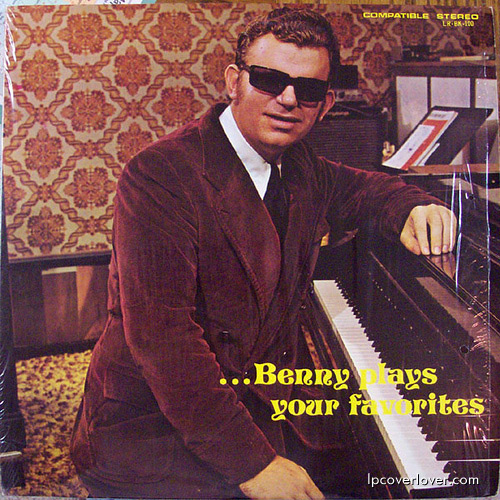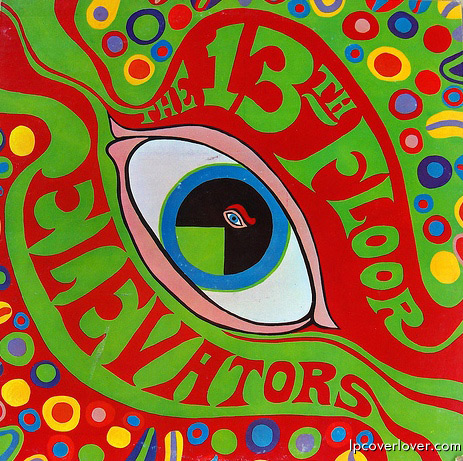Ben up, Ben down

In the early 1960s Melle began working as a film and television composer in Los Angeles, writing music for Rod Serling’s “Night Gallery”, “The Andromeda Strain”, and over 125 other movies and TV shows along with more standard orchestral works. Many of his scores were entirely electronic, completely innovative at the time. Melle also pioneered many developments in electronic music, including early analog synthesizers and drum machines. His band The Electronauts was the first all-electronic ensemble to perform at Monterey. Melle only recorded sporadically from the late 1960s until his death, preferring in the end to concentrate on painting and digital art.
LIVE IN EDDIE BARCLAY’S “BOEUF SUR LE TOIT” CLUB IN PARIS. U.K. FELSTED LP
Nat Peck trombone, Jean Liesse trumpet, Sandy Mosse/Philippe Benson/J.L Chautemps/Andrà © Rosse saxophones, Fats Sadi vibes, Henri Renaud piano, Jimmy Gourley guitar, Benoit Quersin bass, P. Lemarchand dr (One track: Bernard Peiffer piano, Jean-Louis Viale dr)
Thanks to Paul Oberlin for sending this beauty from his collection! There is a whole series of lps and 45’s in this series. Here’s another one.

The 13th Floor Elevators formed as a band in Austin, Texas in late 1965. Tommy Hall, a University of Texas philosophy/psychology student, had been experimenting with psychedelics and playing the jug in a folk band. Hall came up with the unique idea of placing a microphone next to his jug which created a very unusual sound. He could see that combining his electric jug with psychedelic lyrics opened up a strange new territory, and Hall recruited several additional musicians from a Port Aransas-Rockport area group called the Lingsmen: Stacy Sutherland (lead guitar), Benny Thurman (bass), and John Ike Walton (drums). The final link was Roky Erickson.
Erickson was seventeen when he had written and released a local Top Ten single with The Spades (August 1965/zero Records) called “You’re Gonna Miss Me.” He was an accomplished rhythm guitar player with a powerful voice, and The Elevators signed with a Houston record company called International Artists. “The Psychedelic Sounds of the 13th Floor Elevators” was released in August 1966, and the song “You’re Gonna Miss Me” eventually reached #56. The album also included such psychedelic songs as “Roller Coaster,” “Kingdom of Heaven,” “Reverberation (Doubt),” and “Splash 1.”
Before a second album had been attempted, internal friction and drug problems forced the departure of John Ike Walton and Benny Thurman. Replacements were found in Danny Thomas (drums) and Ronnie Leatherman (bass) although Leatherman only lasted until July 1967 to be replaced by Danny Galindo. This unit entered the studio for two months to cut the worthy follow- up album Easter Everywhere (Sept. 1967). It contained an eight minute poem “Slip Inside This House” as well as “Postures (Leave Your Body Behind)” and a cover of Dylan’s “Baby Blue.”
The Elevators did a good deal of touring that included an appearance on the Dick Clark show. When the Elevators had finished their song, Dick Clark innocently asked Roky, “Who is the head of the band?” Roky’s response was, “We’re all heads.”
The Elevators were having a rough time of it in Texas as they were constantly in trouble with the police and the Texas Rangers. The penalty at that time for being caught with one joint was twenty years in jail. The first time the Elevators were busted they were not prosecuted due to a technicality, but a second bust occurred at a state university with Roky being ordered to stand trial. The defense attorney decided a plea of insanity (based on Roky’s altered state) would be less harsh for his client, but the result was a five year sentence. Roky would spend the next three and a half years at a mental institution called Rusk State Hospital.
The Elevators, without Roky who was their figurehead and unofficial leader, were finished. International Artists tried to capitalize on what success the Elevators had by releasing The 13th Floor Elevators Live album (January 1968) which was essentially studio outtakes that were overdubbed with phony cheering and applause. The last Elevator album to appear was Bull of the Woods (December 1968) that was primarily the effort of Stacy Sutherland.
The Elevators tried to get back together several times after Roky’s release, but an ongoing feud between Roky and Tommy never seemed to get resolved. The death of Stacy Sutherland (killed in a domestic squabble with his wife in 1978) confirmed the Elevators existence was officially over.
Except for a bizarre single called “Red Temple Prayer (Two-Headed Dog)” that was released in 1975, Roky’s sabbatical would last thirteen years. Roky Erickson returned with the 1980 album based on B-grade horror movie material called Roky Erickson and the Aliens (August 198O/CBS-U.K.) It was produced by Stu Cook (ex-bass player for Creedence Clearwater Revival) and included such songs as “Creature with the Atom Brain,” “Cold Night for Alligators,” “Stand for the Fire Demon,” and “I Walked with a Zombie.”
Roky continued to make several more interesting albums throughout the 1980s, but his mental condition seemed to be deteriorating. Then in 1989 he was charged with the federal crime of tampering with the U.S. Mail—apparently he collected mail for an apartment complex and never gave it to the addressees. Consequently, he went to court where the judge did not believe that Roky had a mental condition and had him sent to Missouri for “testing.” At some point in the process, Roky snapped.